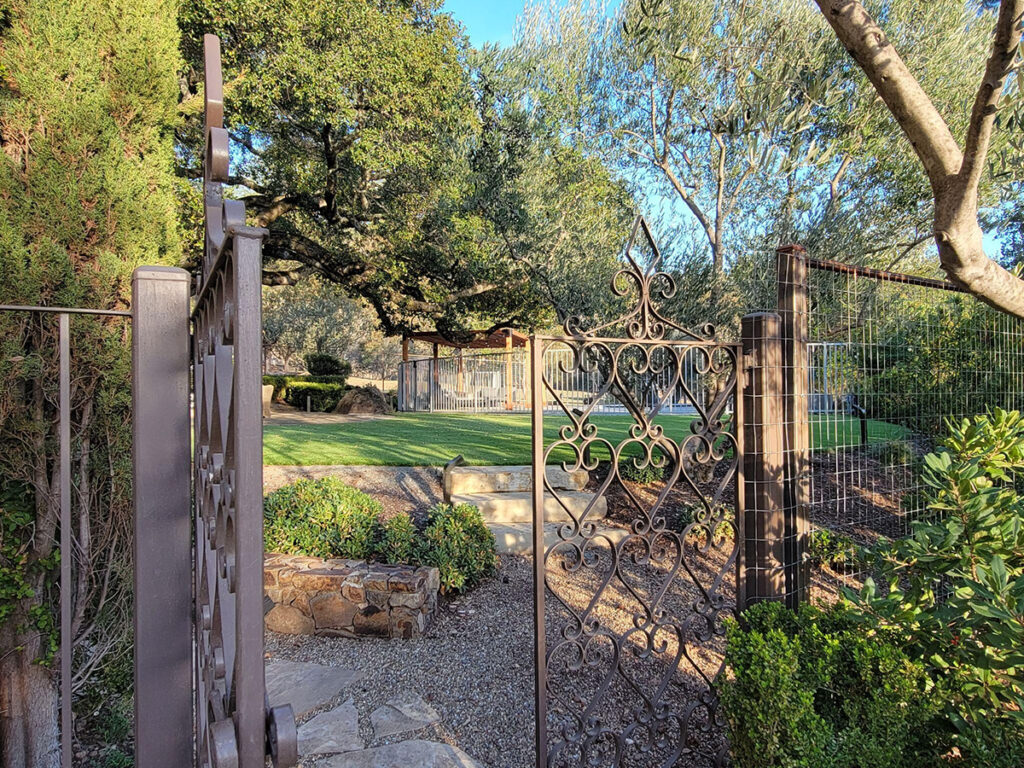
What Questions Should I Ask a Landscape Designer?
With so many styles and approaches to landscape design, it can be daunting to know where to begin. Luckily for you, our lead Landscape designer at Inspired Landscapes, Matt Ripley has nearly two decades of industry experience, so he’s seen it all and knows what to look out for and important questions to be asking.
Here are five essential questions to ask when you’re considering hiring a landscape designer. If you’re currently looking for Landscape Designers Near Me in Sonoma County, remember to include these questions in your inquiring process.
Do you have landscape construction experience as well as design experience?
This question might not be an obvious one for a homeowner but over the years I’ve seen countless landscape designers create beautiful drawings that are totally impractical to build. It’s one thing to be able to conceptualize a landscape, it’s a whole other thing to understand the steps behind construction and why certain ideas might or might not work in a space. Without many years of experience building projects, there’s simply no way someone will be able to think ahead in their design process to be sure everything will work out. This includes understanding elevations and how a patio might transition into a planting area, where the best places are to locate irrigation valves and equipment based on existing utilities at the house, how to manage drainage systems to prevent flooding and standing water, and the list goes on! There is no substitute for actual field experience and you’ll want to be sure your designer has a firm grasp on how the concepts used in their design will be built.
What kind of software do you use to create your designs, or do you draw them by hand?
Back in the day everything was drawn by hand, it was tedious and very time-consuming. Making revisions was a cumbersome process and often resulted in paper with many erasure marks that made the plans hard to read. Let’s face it, landscape designers aren’t cheap! You don’t want them to be clocking hours penciling out everything by hand and having to make slow time consuming revisions. Digitally drawn plans in a CAD based software are incredibly valuable to you as a client because those files can be shared with contractors who can quickly and accurately create bids on your project. This saves you money and frustration at many points along the way. Additionally it’s easy to share files via email, make many copies, and view them remotely from your computer, tablet, or even by phone. While hand drafting is certainly an art form to be respected, it’s a source of headaches for a modern day client. Be sure your designer is skilled in a CAD based software so that your plans are dynamic, functional, and can be utilized by a variety of contractors and estimators with ease.
 Are you known for any particular style of design? Do you specialize in one type or many kinds of landscapes?
Are you known for any particular style of design? Do you specialize in one type or many kinds of landscapes?
At Inspired Landscapes we thrive in designing all types of landscapes and deeply listening to our clients needs to design what they want. We love showing off our creative side as well when we meet clients who are really looking for fresh ideas because they aren’t sure what they want. However, some designers are very particular about the styles and aesthetics used in their designs and simply aren’t interested in doing anything else. That’s totally fine and respectable, design is a creative endeavor and artists are fully within their right to retain their creative voice, however that doesn’t always jive with homeowners who have their own ideas and vision that differs from the designer. Make sure to establish early on if your designer is flexible and open to new ideas, or if they have a specific vision that they plan to replicate on your property. If you love their vision and style it could be a great fit for you, but understanding one way or the other ensures you are making an informed decision when hiring them.
What is your background in irrigation and water management?
One might assume that all landscape designers are experts in irrigation however that is often not the case. Some designers only specialize in planting, or focus solely on hardscapes, and only have a broad-stroke understanding of how irrigation works. For us, water management is paramount, thats why we hold certifications as QWEL (Qualified Water Efficient Landscapers) as well as Expert level CLCA Water Manager certification. This is problematic for your landscape and your pocketbook long term because if a designer suggests a system that isn’t efficient, such as using sprinklers in a shrub bed, it could cost you tons of money down the road. In the mentioned example you’d not only be paying for extra water, but by spraying water everywhere rather than using point source drip, you’d be encouraging weeds to grow rampantly causing a maintenance nightmare down the road.
Additionally understanding how irrigation is affected by elevation changes in the landscape is crucial. Some drip systems will end up flooding a certain low elevation area of a landscape because all the water will drain out of the system to that low point when the valve shuts off. Your designer is responsible for planning an irrigation layout that spreads water evenly and efficiently and makes sure it stays there and doesn’t create a bog or kill plants because they end up over watered due to inefficiencies in the design.

What kind of hardscapes have you designed in the past? Can you show me photo examples?
Hardscapes are considered any hard surface that might be a pathway, patio, or similar area for foot traffic. That can mean many different things including concrete, pavers, natural stone, crushed rock, decomposed granite, or other hard surface which leaves a huge range of possibilities on the table. If a designer is only skilled in planting they might suggest a basic hardscape surface they are familiar with that doesn’t actually work well in that particular situation. A deep understanding of both aesthetics and functionality of various hardscape surfaces is of the utmost importance.
For example around a pool you’ll want the ability to walk barefoot comfortably. If you use crushed rock or decomposed granite, these materials will be sharp on your feet, and because they are loose they are likely to end up moving around and ending up in the pool. Both uncomfortable and a maintenance nightmare! You also want to be sure the material around the pool isn’t going to be slippery when wet, this rules out many types of natural stone with a slick surface as well as polished concrete. Ideally you’ll have a material with a lightly textured and porous surface making precast concrete pavers and certain types of natural stone great options for pool side hardscapes.
If you have pets who actively run in and out of the house, you probably don’t want a material that will stick to their feet and be tracked into the house, this makes decomposed granite an undesirable option for the transition between the backyard and the house. If you have a pathway where you think you’ll be pulling trash cans to a storage area, or using a wheelbarrow to move materials around, you’ll want a smooth, consistent surface. A stepping stone walkway will be really hard to navigate as the gaps between the stones will catch the wheels.
As you can see a simple choice about what type of surface to use actually has many considerations involved. How will you use this space? What type of footwear, if any, are you likely to have on when you walk across it? Will it get extra hot in the sun and burn your feet? Will you have a level surface so your chairs and furniture won’t wobble? Without a breadth of knowledge regarding various hardscape surfaces you could end up spending a lot of money and time building something that simply doesn’t fit your needs. As hardscaping costs more per square foot than most other types of landscaping, it’s key that your designer gets it right the first time.
If you are looking for a Landscape Designer in Sonoma County, give us a call today for a free consultation! (707) 395-7474

Owner, Inspired Landscapes LLC
Matthew Ripley is the owner of Inspired Landscapes LLC, a Healdsburg based landscape design, installation, maintenance, and irrigation firm serving Sonoma County. His work blends horticultural expertise with sustainable practices, drawing creative influence from Sierra backpacking and Sonoma winery estates to craft gardens that invite wildlife and year round color. Client testimonials highlight his design leadership on residential, estate, and winery properties across the region.





